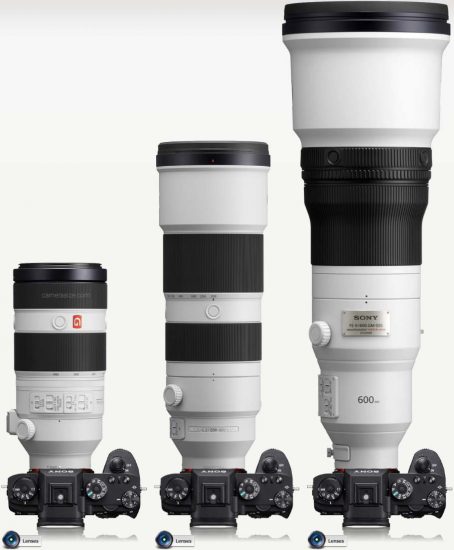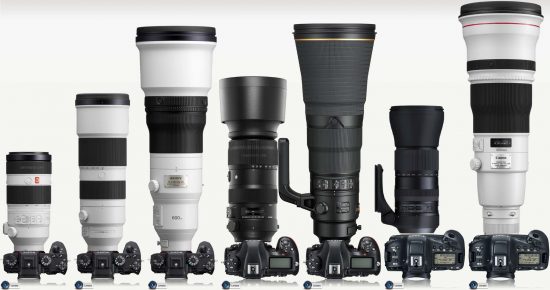

Dpreview published an interview with Yasuyuki Nagata, head of Sony’s global interchangeable lens business. Here is the recap from SonyAddict:
- The Sony 400mm f/2.8 sold much better than expected – actually double what was expected
- Top photographers are using the Sony 400mm f/2.8 at sporting events
- 70% of 400mm users are professionals
- The 400mm f/2.8 has a long waiting list
- The 600mm and 200-600mm are more for high-end amateurs that shoot birds, wildlife, and aircraft.
- 70-80% of 600mm and 200-600mm owners will shoot wildlife which is why the market is bigger for the 600mm than the 400mm.
- Some will use the 600mm and 200-600mm on APS-C cameras to get more reach
- The 600mm f/4 is big but 10g lighter than the Canon EF 600mm f/4L IS III USM
- G Master lenses like the 600mm have no compromise and represent future lenses for today
- G lenses like the 200-600mm have some compromises in areas like materials or the body
- The 200-600mm lack magnesium-alloy and the newer XD linear AF actuators (they aren’t really needed)
- G lenses are also supposed to be more affordable
- GM lenses always have new technology developed for them that didn’t exist before
- Sony is considering future camera bodies with GM lenses too like the rumored a9II
- Sony designs their GM lenses for more focus calculations per second and faster frame rates than the a9 can achieve
- Sony is keeping its telephoto switch/button layouts consistent
- Future a9 cameras will have more speed, less weight, greater usability
- The Sony 200-600mm supports video functions because many shoot video and photos, which is why Sony used linear action AF actuators
- Mechanics and optics factor into video performance, but Sony also thinks they have the best camera bodies due to their integration
- Sony zooms are always trying to reduce focus breathing and axial shift, which can be bad for video
- The Sony 200-600mm zoom is an internal zoom and a lot of its length comes from the hood, which is removable
- If you are a serious shooter the 600mm is for you and its probably as good as the best competitive alternatives, but Sony’s integration exceeds others
- At this time the Sony a9 has no competitor and its performance is the best
- Sony wants many photographers to carry the reasonably priced 200-600mm and they even built it to support their teleconverters
- Different bodies will make these lenses perform very differently, but they are nowhere near their performance limits at this time these lenses will be much faster on future a9 cameras
- Sony is designing for its lenses to keep up with the next generation of cameras
- Sony thinks about compatibility between the mechanical parts, electrics, even software when designing lenses
- Others talk about channels for communication between the camera and lens, but Sony says that doesn’t matter unless the actuators can keep up
- Sony is still pushing glass weight closer to the body so lenses handle better
- Keeping the size and weight down is the hardest part of designing a lens
- At least 10% of 400mm f/2.8 owners bought teleconverters
- It takes a very long time for lens technology to filter down to consumer lenses because lenses aren’t updated often
- High-end lenses should stand as benchmark performers for about 10 years
Source: Dpreview via SonyAddict








